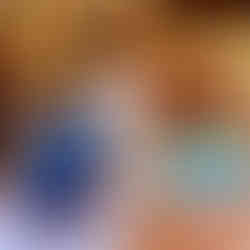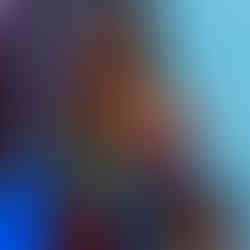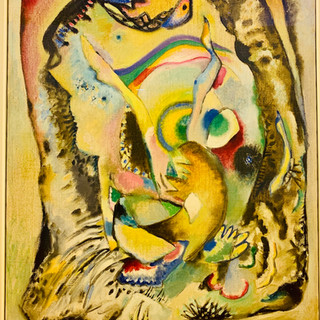Wine lovers, let's dream about the perfect wine weekend.
Where would it be?
- Less than 2 hrs by plane from London (perhaps on an easy business route so lots of cheap flights at good times?)
- Short drive from airport to the heart of the wine region.
- Small enough to feel like you can do it (some sort of) justice in a short trip.
- Not really over-developed (Napa, looking at you!).
- Somewhere with a rich traditional food culture, with lots of local dishes to discover.
- Loads of incredible reasonably-priced restaurants, including even Michelin Starred ones - which aren't priced for Russian Oligarchs.
- Ridiculously pretty scenery and architecture.
Enter, Alsace.

Alsace, how do I love thee? Let me count the ways:
A quick 1.40hrs into Basel (with tonnes of BA flights from LHR) and 45 minutes by car to Colmar and you're there.
The entire wine region is only 75km in length.
It doesn’t feel super touristy, or like you’re being sold a very glossily packaged wine ‘experience’ decided by the marketing team, with a price tag attached.
Despite this it’s got the second highest concentration of Michelin star restaurants per capita after Paris, many of which are incredibly well priced when you compare to London, NY, Paris, California. There's loads of regional specialities to discover from Spätzle (gnocchi like pasta), Choucroute, (fermented cabbage a la Sauerkraut), Foie Gras, lots of local cheeses of course, including the famous stinky Munster.
Everywhere you go the smell of fresh Bretzels (It's Bretzels, not Pretzels ok, 'cos we're a bit culturally confused, alright?!) is there to tempt you, and beautiful patisserie with a distinctly Black Forest twist...




Across the valley from the Black Forest of Germany and sheltered by the Vosges Mountains, Alsace is a sunny little pocket of Hansel & Gretel villages, gingerbread houses, and hillsides of vines so steep they often form the backdrop to the Medieval spires of the picture perfect village nestled at the bottom.
If you paid attention to GCSE history, you might remember that Alsace has bounced between the French and the Germans over the years, leaving the region as its own cultural bubble, a brilliant blend of French and Germanic influences.


THE WINES - YOUR ESSENTIAL BRIEFING
When it comes to wines, it's all about the whites in Alsace. Riesling, Pinot Gris, Gewurtztraminer and Muscat, (which is dry).
Like all great wines, Alsatian wines are defined by their location on earth. The Vosges Mountains create a weather barrier from the Atlantic weather systems, which all gets dumped on the other side of the mountain, onto poor old Lorraine, (of quiche, and GSCE world war history fame), meaning Colmar is the sunniest, driest town in France, despite the fact it has a relatively Northern latitude.
Why is this relevant? It means that grapes can accumulate excellent phenolic and physiological ripeness and high sugar levels, as they benefit from extended sunshine in the Autumn, while maintaining good levels of acidity thanks to the continentality and latitude of the region, which means cold nights, a large diurnal temperature range (from day to night).
Hence the best Alsatian wines have a very full body (thanks to high alcohol levels due to high sugar), concentrated flavours (thanks to the extended ripening) and with good acidity (thanks to the cool climate latitude and large diurnal range)
Unsurprisingly therefore, you also get a lot of Alsatian wines that have some sweetness, from residual (unfermented) sugar, notably Selection de Grains Noble ('selection of nobly rotted grapes', i.e affected with magical alchemist fungus Botrytis aka Noble Rot) which are, by appellation law, always sweet, and Vendage Tardive ('late harvest') which will be even richer, and often sweet, though can also be dry to the taste.
Slightly problematic is the lack of officially labelling terminology for sweet and dry which makes it always a bit of a minefield if you really dislike the idea of sweet wines. However, I would encourage any sweet-phobes to hold judgement. We're not talking sickly sweet Moscato or Californian jug rosé. This is complex wine with good levels of acidity, meaning the wines don't tend to feel cloying.
There is also lovely Cremant d'Alsace, a dry, refreshing traditional method sparkling to enjoy, and lots of very light, elegant Pinot Noir, to mix things up.
So, now that you're an expert on Alsatian wines, the all-important questions are: where to stay, who to visit, and where to eat!
Here are my top tips.

WHERE TO STAY
Colmar is lovely and considered the main town of the wine region. So, if you want to stay somewhere which has the benefits of a larger town, then here is a good option.
However, I recommend to stay in Riquewihr which is large enough to have enough restaurants to keep you interested for 3-4 nights, but small enough to feel like you’re actually living on the set of Beauty and the Beast, Act 1, Scene 1.
You are really in the heart of the wine land here, surrounded by vines and gingerbread style houses at every turn.

You will need to pre-book for dinner, especially on a weekend, as we discovered to our detriment the one evening we decided to throw ourselves to the fate of spontaneity.
We noticed on Saturday night many restaurants actually took to putting a little ‘Restaurant Complet - Full’ sign on the door, a sign of how often they must get hopeful tourists like us searching for a last minute table.
We stayed in a sweet little AirBnB which is right in the heart of the action.




WHICH WINERIES TO VISIT AND WHAT WINE TO DRINK
Here's a list of the top producers:
Léon Beyer
Hugel
Trimbach
Blanck
Marcel Deiss
Josmeyer
Kientzler
Kreydenweiss
Ostertag
Rolly Gassmann
Schlumberger (pronounced sh-lum-ber-jay)
Schoffitt
The Fallers at Domaine Weinbach
Zind-Humbrecht.
In terms of visits, we picked just 4 to make formal visits:
We visited Trimbach, to kick off with one of the bigger names, and producer of world famous uber-dry Riesling Clos Ste Hune.

Zind-Humbrecht - who Jamie Goode considers perhaps the greatest producer. Check out my write up here: Two Unmissable Alsace Wineries
The Fallers at Domaine Weinbach, where we had such an entertaining tasting with Catherine Faller herself. See my write up here: Two Unmissable Alsace Wineries
Josmeyer - since I was intrigued by the fact its two sisters who now run the domaine.

NEED TO KNOW BEFORE YOU VISIT WINERIES IN ALSACE
In Alsace, it's old school French style. This region doesn't approach wine tourism in the same way the Aussies or the Americans have, where turning up to a winery is more akin to a hospitality experience, with a dedicated tasting room, tasting room manager, and paid tasting 'experiences' with pre-selected flight of wines (with usually a gold, silver, bronze option and a platter of 'local artisanal cheese' for good measure).
In Alsace, mainly you are visiting the working winery, or even the family home of the Domaine, where people might be taking time out of their other responsibilities to give you a tasting. Of course don't let this put you off visiting but it's something important to bear in mind so you don't go in expecting the type of engineered customer experience you might have in Napa or Barossa Valley.
As such, generally you are not charged for the tasting. It's offered complementarily on the basis that you are there to buy, not just to have an experience. Equally, you will be talking to actual winery staff, maybe even the owner, rather than someone who's effectively running a pseudo-bar/tourist attraction.
Firstly you must book to make an appointment, email or ever better, call! With a few exceptions, theirs are not Aussie style drop-in cellar doors.
They are closed over lunch time, naturellement! And they are, mostly, not open on a Saturday (exceptions of the ones I looked into, Trimbach, Weinbach and Schlumberger by appointment).
So, it's good to bear all this in mind in terms of how you approach the tasting. Josmeyer charge 10 euros per person which is then taken off if you buy a case (6 bottles) of wine. Weinbach charge 25 euros, also taken off with purchase. Therefore, if you're not planning to spend a lot of money, these might be good options as you can feel slightly better that they've built non-buyers into their structure for offering tastings.
On the plus side, because the wine region is pretty small, you don't have to worry quite so much about logistics as when planning visits in deceptively large regions like Napa and Bordeaux!


Where to Eat:
You are seriously spoilt for choice here. Although it can sometimes feel nice to be spontaneous, we noticed everywhere good gets booked up, and also kitchens close early for lunch and dinner, so you kind of want to have your game face on, if you're serious about checking out all the great places! Be prepared by the end of it you will be craving something vegan. This is land of rich, meaty, heavy cuisine. Strap in.
La Table du Gourmet (* 1 Michelin Star), Riquewihr
Tasting menu only, with 3 to choose from, and sensational wines. It was here I had the pairing of my life: a dish of Foie Gras in a very sticky, very moreish sweet and savoury jus with girolles mushrooms, sweetcorn, and a creamy soufflé-like topping with a gentle corn flavour which was then scorched on top, giving off a delicious smoky, toasty smell. Words just done do justice. It was paired with an Alsace Grand Cru Furstentum 2007 by Vincent Fleith, which was a beautifully rich Pinot Gris.
I would fly back to Alsace just to eat that again.
It's not cheap however, the top tasting menu is 120 euros, plus 58 for the (very generous) wine pairings, plus extra supplements for cheese, and a glass to pair with the cheese. For the full blow-out experience, expect to spend around 250 euro/head.

This is a real gem for two reasons. Japanese and French fusion, which makes a nice change from the very heavy Alsace style food. Secondly, Asian food is a classic go-to cuisine for the richer, sweeter Alsace wines. You can do a 3 course tasting menu for around 50 euro, plus wine pairings, or go the whole hog and blow out on the longer degustation menu, featuring Wagyu beef, with 5 paired wines, for 150 euros.
The food is good here but really it's about the incredibly priced wine list - not just Alsatian wines, but wines from all around France and the world at amazingly low mark ups. You'll find lots of the top Alsace producers represented, including Andre Ostertag, which is what we opted for; a beautiful dry Riesling. The lunch menu is amazing good value too - 3 courses from just 30 euros!! It's slightly off the main route, but you really get the sense (or at least we did, turning up for Sunday lunch) this is a favourite place for locals to meet and enjoy good food and incredibly priced wines, perhaps slightly away from the more higher priced more touristy joints.
A very elegant restaurant with a modern feel, also with amazing prices given how luxurious the whole experience feels - and the beautifully presented food. It does have the word Painter in the restaurant name, after all. Lunch menu starts at 30 euros, but you can go bigger with more elaborate tasting menus and obviously a lovely wine list with all the usual suspects.

Other Places to recommend from my research and what we heard from locals:
Mega blow out:
Auberge de L'Ill ** - 2 Michelin star, (recently they had 3!)
This place is very expensive but comes highly recommended, including by Catherine Faller, who is one of those women you just know has impeccable taste. Yes it's expensive, but not so much when you compare to London and Paris, said Madame. Still, prepare to remortgage your house. The dining room, overlooking all the greenery of the terrace and the water does look absolutely divine. (Pic from their website)

La Grappe D'or
This bustling little restaurant was recommended as the best restaurant in Riquewihr by our local AirBnB hosts. Sadly it was closed the only opportunity we would have had to go, but if I went back this would be in my list.

La Cloche du Fromage, Strasbourg
A brilliant little fromagerie but also a restaurant across the road that looked epic. Ultimate cheese-lover heaven in Strasbourg.

Quai 21, Colmar
The ex-Chef of Winston du Chambard, came recommended also by Catherine Faller.
We also ran out of time to visit the Winstub du Sommelier, which has reopened as a wine bar serving only cheese & charcuterie (it was once a restaurant) but I imagine this would be a great place to work your way through a few different glasses.
STRASBOURG
If that all wasn't enough - you can also spend a day easily in Strasbourg which is just a 50 minute drive from Riquewihr. There is a brilliantly curated Musee d'Art Moderne, where rather than have different sections for contemporary and modern art, all work, whether modern or contemporary is presented together, but curated along thematic lines. The figure. The paint brush. Abstraction. That type of thing - it makes for a really interesting walk around. There are some old faves like Dumas, Rodin, Kandinsky, Picasso to enjoy.
Also, a beautiful cathedral, some great shopping, and more of a beer vibe here, so if you're sick of wine, you can change it up with some beers and hearty Franco-German fare. It's a beautiful old city, well worth a meander around especially the Petite France area, and Rue Dentelle, which have the classic Strasbourg architecture.





























































